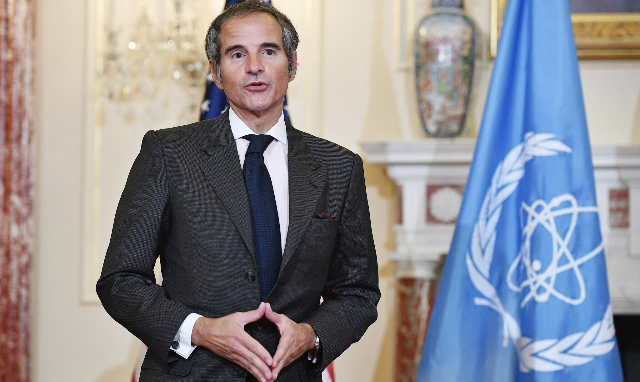The head of the United Nations’ nuclear watchdog said on Tuesday he anticipates news soon on when he may travel to Iran, adding that he expects to go to Tehran before the agency’s November Board of Governors meeting.
Grossi said in Washington that his expectation was based on his conversations with Iranian officials, but he did not provide details.
“I am expecting news soon about it,” he told reporters.
Grossi added the IAEA has been able to service cameras at all sites in Iran aside from the TESA Karaj complex.
The workshop at the TESA Karaj complex makes components for centrifuges, machines that enrich uranium, and was hit by apparent sabotage in June in which one of four IAEA cameras there was destroyed. Iran removed them and the destroyed camera’s footage is missing.
TESA Karaj was one of several sites to which Iran agreed to grant IAEA inspectors access to service IAEA monitoring equipment and replace memory cards just as they were due to fill up with data such as camera footage. The Sept. 12 accord helped avoid a diplomatic escalation between Iran and the West.
The head of the Atomic Energy Organization of Iran, Mohammad Eslami, had urged the UN nuclear agency, the IAEA, to clarify its stance on the attack on Tessa Kara Complex near Tehran.
Eslami said the nuclear site once came under a terrorist attack by the Zionist regime and it is necessary that International Atomic Energy Agency clarify its position on the incident.
He also added installing cameras at the facility is not binding under the 2015 Iran nuclear deal and that the IAEA know this.
The agency has announced Iran has failed to fully honor the terms of a deal struck some three weeks ago to allow the watchdog’s inspectors to service monitoring equipment in the country.
At the same time Iran’s envoy to IAEA has stated that the director general’s report isn’t accurate and goes beyond the agreed terms of the joint statement. Tehran insists that the agency must first condemn the terrorist attacks and acts of sabotage against its nuclear facilities.
